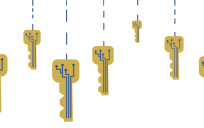When most folks hear “cybersecurity,” their minds jump to firewalls, phishing alerts, or the ever-terrifying “you’ve been hacked” popup. But the truth is, the biggest risk — and opportunity — doesn’t come from the tech. It comes from the humans.
Cybersecurity culture is more than strong passwords and mandatory training. It’s the shared mindset, values, and behaviors that guide how people think and act around data, systems, and digital risk. And guess what? If your team’s culture doesn’t prioritize security, no tech stack in the world can save you.
Why Culture Is the Real Firewall

According to Verizon’s 2024 Data Breach Investigations Report, 68% of breaches involve the human element — whether that’s clicking on a malicious link, reusing passwords, or just forgetting to log out. Culture, not just compliance, is what turns security from a checklist to a habit.
Agencies that lead in cyber resilience often have something in common: a people-first security culture where everyone — from the intern to the director — understands they have a role to play. As CISA says, security is a “team sport”.
So, How Do You Build It?
- Go Beyond the Annual Training — Annual cyber training is like flossing once a year: you technically did it, but don’t expect great results. Try microlearning, gamified modules, and lunch-and-learns instead.
- Lead by Example — If the leadership team isn’t modeling good behavior (yes, we see you emailing spreadsheets with sensitive data), no one else will either.
- Reward Smart Behavior — Celebrate staff who report phishing attempts or spot policy gaps. Nothing motivates like a little public praise — or the promise of free coffee.
- Integrate Cyber into Everyday Workflows — Make secure practices frictionless. Auto-lock screens, password managers, and secure file-sharing tools go a long way.
- Foster a No-Blame Culture — Mistakes will happen. The goal is to report early and fix fast — not to shame or punish.
The Payoff: Trust, Resilience, and Better Sleep
When people know what’s expected — and why it matters — they’re far more likely to engage. Plus, a strong cybersecurity culture builds trust with the public. Nobody wants to interact with a government agency that can’t protect its data.
And let’s not forget: Culture-based risk reduction is cheaper than the alternative. The average cost of a breach in the public sector? Nearly $2 million, according to IBM’s latest report — not to mention the reputational fallout.
Final Thoughts
Cybersecurity doesn’t live in the IT department. It lives in the breakroom, in Zoom calls, and in every “should I click this?” moment across your agency. The good news? Culture is changeable — and when you get it right, it becomes your most powerful (and least expensive) risk control.
Want to protect what matters in 2025? Start by building the kind of culture that locks the front door, questions the unexpected email, and never, ever reuses “Password123.”
Dr. Rhonda Farrell is a transformation advisor with decades of experience driving impactful change and strategic growth for DoD, IC, Joint, and commercial agencies and organizations. She has a robust background in digital transformation, organizational development, and process improvement, offering a unique perspective that combines technical expertise with a deep understanding of business dynamics. As a strategy and innovation leader, she aligns with CIO, CTO, CDO, CISO, and Chief of Staff initiatives to identify strategic gaps, realign missions, and re-engineer organizations. Based in Baltimore and a proud US Marine Corps veteran, she brings a disciplined, resilient, and mission-focused approach to her work, enabling organizations to pivot and innovate successfully.





Leave a Reply
You must be logged in to post a comment.